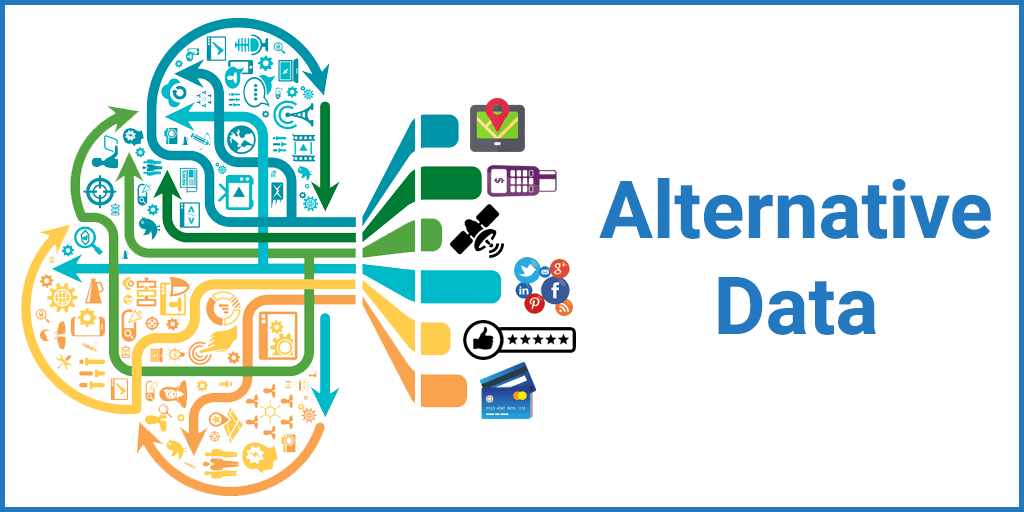In the ever-evolving world of investment staying ahead of the competition often comes down to having better insights, traditional data like financial statements and economic reports is no longer enough. Enter alternative data a powerful tool that gives investors a unique perspective and a competitive edge.
This article explores how alternative data can revolutionize your investment strategy and help you make smarter, more informed decisions.
Table of Contents
- What Is Alternative Data?
- Why Alternative Data Matters in Investment Analysis
- Types of Alternative Data
- 1. Social Media Sentiment Analysis
- 2. Satellite Imagery
- 3. App Usage Data
- 4. Credit Card Transaction Data
- 5. Web Scraped Data
- How to Integrate Alternative Data into Your Investment Strategy
- 1. Identify Your Goals
- 2. Choose Relevant Data Sources
- 3. Use Advanced Analytics
- 4. Combine with Traditional Data
- Challenges in Using Alternative Data
- Tools and Platforms for Alternative Data Analysis
- 1. Bloomberg Terminal
- 2. Quandl
- 3. Thinknum
- 4. Kensho
- 1. Hedge Funds
- 2. Venture Capital
- 3. Retail Investors
- Best Practices for Using Alternative Data
- The Future of Alternative Data in Investment
- Conclusion
- FAQs
What Is Alternative Data?
Alternative data refers to non-traditional information that investors use to analyze investments. Unlike conventional financial data, it comes from unconventional sources such as social media, satellite imagery, app usage patterns, and web traffic.
Why Alternative Data Matters in Investment Analysis
1. Access to Untapped Insights
Alternative data provides insights that traditional methods often overlook, offering a more comprehensive view of market trends.
2. Early Market Indicators
By analyzing real-time data, investors can identify emerging trends and react faster than competitors relying solely on traditional data.
3. Competitive Advantage
Unique insights give you an edge over other investors who aren’t leveraging these data sources.
Types of Alternative Data
1. Social Media Sentiment Analysis
Social platforms like Twitter and Reddit provide real-time sentiment analysis about stocks and industries.
2. Satellite Imagery
Satellite images can reveal trends in retail traffic, agricultural yield, and industrial activity.
3. App Usage Data
Understanding how consumers interact with apps can shed light on the growth trajectory of tech companies.
4. Credit Card Transaction Data
Analyzing spending patterns can offer insights into consumer behavior and company performance.
5. Web Scraped Data
Data from online reviews, product pricing, and web traffic can indicate customer satisfaction and business trends.
How to Integrate Alternative Data into Your Investment Strategy
1. Identify Your Goals
Determine what you want to achieve. Are you looking for short-term trading opportunities or long-term investment insights?
2. Choose Relevant Data Sources
Focus on data that aligns with your investment objectives. For example, if you’re investing in retail, consumer spending data is crucial.
3. Use Advanced Analytics
Leverage tools like machine learning and AI to process and analyze large datasets efficiently.
4. Combine with Traditional Data
Alternative data works best when used alongside traditional data for a holistic investment analysis.
Challenges in Using Alternative Data
1. Data Quality Issues
Not all alternative data is reliable. Ensure the data is accurate and comes from credible sources.
2. High Costs
Acquiring and analyzing alternative data can be expensive, particularly for small-scale investors.
3. Regulatory Concerns
Be aware of data privacy laws and regulations, such as GDPR, that may impact your use of certain data types.
4. Complexity in Analysis
Processing and interpreting large datasets require technical expertise and advanced tools.
Tools and Platforms for Alternative Data Analysis
1. Bloomberg Terminal
Provides access to financial and alternative data, along with advanced analytics tools.
2. Quandl
Specializes in alternative data for investment analysis, including corporate and economic datasets.
3. Thinknum
Focuses on web-sourced alternative data for insights into company performance.
4. Kensho
Uses AI to process and analyze alternative data for investment insights.
Success Stories of Alternative Data in Action
1. Hedge Funds
Many hedge funds use satellite imagery to monitor retail parking lots and predict quarterly earnings.
2. Venture Capital
VC firms analyze app usage trends to identify high-potential startups before they gain widespread attention.
3. Retail Investors
Retail investors use social media sentiment analysis to gauge public opinion on trending stocks.
Best Practices for Using Alternative Data
- Start Small: Begin with one or two data sources to avoid overwhelming complexity.
- Prioritize Data Security: Use secure systems to store and process sensitive data.
- Focus on Actionable Insights: Avoid drowning in data; focus on information that directly influences investment decisions.
- Continuously Learn: Stay updated on new data sources and analysis tools to maintain a competitive edge.
The Future of Alternative Data in Investment
The use of alternative data is poised to grow exponentially as technology advances. Innovations like AI, blockchain, and IoT will unlock new data sources, making investment analysis more sophisticated and precise.
Conclusion
Alternative data is no longer optional for serious investors it’s a necessity. By integrating unconventional data sources into your investment strategy, you gain deeper insights make informed decisions, and stay ahead of the competition. While challenges exist, the potential rewards far outweigh the risks. Embrace alternative data today and unlock new opportunities in the world of investment.
FAQs
1. What is the biggest advantage of using alternative data in investments?
It provides unique insights and early indicators that traditional data often misses.
2. Can retail investors use alternative data?
Yes, retail investors can access certain types of alternative data through tools like social media sentiment analysis and app usage trends.
3. Is alternative data expensive to acquire?
While some sources are costly, others, like social media data, are more accessible and affordable.
4. What industries benefit the most from alternative data?
Industries like retail, technology, agriculture, and finance can benefit significantly from alternative data.
5. How do I ensure the data I use is reliable?
Always verify data sources, cross-check findings, and use trusted analytics platforms.






